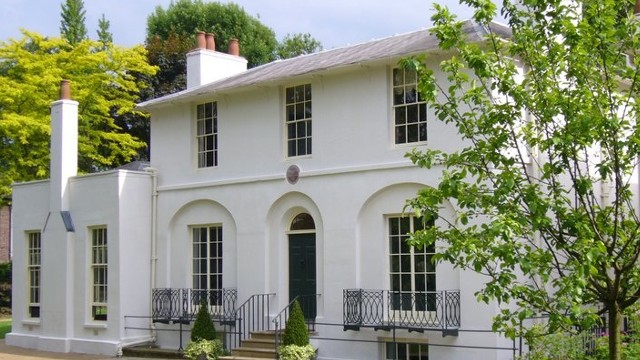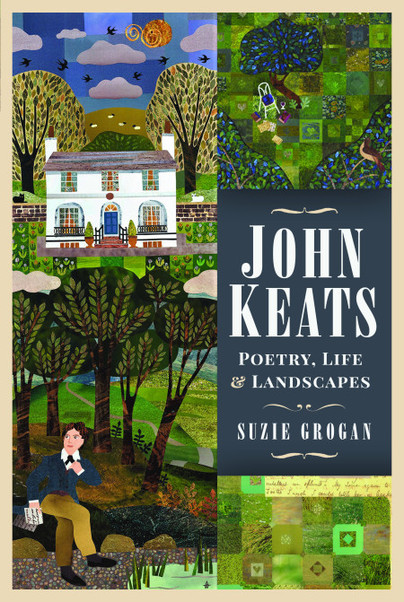Author Guest Post: Suzie Grogan
A life as relevant today – John Keats: Poetry, Life and Landscapes
I first became interested in John Keats when I was about 12, when a children’s TV show produced a ‘special’ on writer’s houses and chose Wentworth Place in Hampstead, now known as Keats House. All through my teens and on through adulthood his life story, poetry and letters have resonated with me and a lifetime of study has culminated in the publication of John Keats: Poetry Life & Landscapes in January 2021. It is coming out to coincide with the bicentenary of Keats’s death. 200 years ago, on the 23rd February 1821, when he died in Rome of tuberculosis, aged just 25.
The Romantic poets have remained popular into the 21st century but Keats especially so as he continues to draw young people to him. Artists and musicians reinvent his work across all the creative arts, bringing his poetry and the wisdom in the many letters he wrote to new audiences. His letters are wise beyond his years, thoughtful and expressive of his intense moods. He has a love of beauty in all things, a willingness to live with uncertainty and become as one with nature, a mindful way of living that is promoted today. Keats endured periods of intense anxiety and, perhaps, clinical depression, and his words continue to speak to us in the 21st century, when so much is uncertain, and we need people with whom we can identify.

I did not want to write a standard biography. There have been many wonderful books about Keats written over the years and I wanted the book to have a new, accessible approach offering a different perspective. Over the years I have ‘followed’ Keats to the places that feature most strongly in his life story – Hampstead of course, the Lake District and Scotland, Isle of Wight, Teignmouth, Oxford, Chichester, Winchester and lastly Rome. In the book I write about his time spent in those places, how they have changed over the years and how they continue to embrace Keats.
He wrote ‘We read fine things but never feel them to the full until we have gone the same steps as the Author’, and I have certainly found that to be true in my study of Keats. In following him we find the real man – not the stereotypical frail Romantic poet, dying young, but a robust and fiery young man, who endured the rigours of medical training, who had strong views on the historic and social events of his time and a zest for life and love that was cut short by a horrible disease.
Life has changed significantly in the 200 years since his death (in the Lake District, for example, his walking route is now largely under the busy A591) but there are places where his presence lingers. Anyone who loves the famous ‘Season of Mists and mellow fruifulness’ of the Ode to Autumn should certainly visit Winchester, and follow a walk described in his letters. I follow it in the book and a leaflet and map is provided by the tourist information centre.
Keats has been with me through some difficult periods in my life – as I was treated for cancer, as I experienced my own mental health issues – so I wanted to highlight the value of landscape and poetry to us all, as human beings. Keats himself said: ‘Poetry should… strike the reader as a wording of his own highest thoughts, and appear almost a remembrance.’ Poetry can be dark, brooding and full of imagery, or it can be light, funny and inspirational. There is a poet for everyone. They speak to our souls and get to the heart of the matter. If you think poetry is stuffy and difficult I believe you just haven’t found ‘your’ poet.
We don’t think of Keats as a poet of ‘place’ as we might Wordsworth for example, although he is most closely associated with Hampstead and perhaps Rome, where he is buried. However, the letters Keats writes to friends and family are packed full of his impressions of time and place and how they impact on his mood. He writes of the weather, the landscape and his immediate surroundings – all of which might cheer him, depress him or influence his poetry. As we remain in lockdown and live under restrictions, we too have become more conscious of our environment and the effect it has on us. When there were fewer cars on the road, we noticed the power of birdsong and, forced to walk, we saw the flowers even as they came up between cracks in the pavement.

Of course, it is Keats’s poetry for which he is most widely known. Despite those ‘big’ names – Kipling, Tennyson, Wordsworth, Byron perhaps – he was the only poet to have two poems in the Nation’s Top Ten favourites. Many think he is the greatest poet in the English language after Shakespeare. If you have never read any of Keats’s poetry, I recommend the one that was my favourite as a 12-year-old – ‘When I have fears…’ and one of his best known poems, Ode to a Nightingale (which was in the Top Ten), offers so much to a reader. Simply read it and roll the beautiful syllables around your mouth: ‘With beaded bubbles winking at the brim,/And purple-stained mouth;’ is pure sensuous pleasure.
As we approach the bicentenary, it is an opportunity to find out more about an oft quoted man who has so much more to say to us than ‘seasons of mists and mellow fruitfulness’, wonderful though that is. He experienced great loss in his life, had a passionate romance with Fanny Brawne, ended only by his death, wrote of the fear of failure and hopes for success. He was a loyal friend who inspired an adoring circle who ensured that success if not in his lifetime, then certainly after death.
Poetry, life and landscape has, indeed, much to offer us all.

You can order a copy here.

